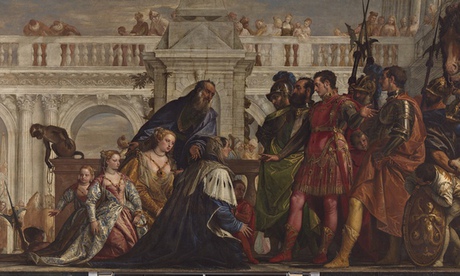
A detail from Veronese’s The Family of Darius before Alexander. Courtesy of the National Gallery
To the contemporary viewer, Paolo Veronese, 1528‑1588, is a conundrum. How can one of the greatest of all painters not be a great artist, too? The answer was inadvertently suggested by one of his most ardent admirers, Henry James: “Never did an artist take a greater delight in life, seeing it all as a kind of breezy festival,” he wrote. “He was the happiest of painters and produced the happiest pictures in the world.” Happiness is a trait that does not always play well now: we might prefer that Veronese displayed instead a hint of Michelangelo’s terribilità, Leonardo’s intellectual restlessness or Titian’s all-encompassing human sympathy.
To his contemporaries, however, the pomp and celebration to be found in his pictures were not defects but his distinguishing triumphs. Giorgio Vasari, the Florence-centric painter and artist-biographer, was sufficiently impressed by Veronese’s art and status to include the Venice-based painter in his second edition of The Lives of the Artists. He also attracted two near-contemporary biographers. Part of the reasoning behind the National Gallery’s new exhibition of 50 of Veronese’s paintings, the first ever large-scale show of his work here, is to gauge the true level of his merit and to ascertain whether he had depths to match his facility.
More
Michael Prodger
The Guardian

Leave a comment
Comments feed for this article